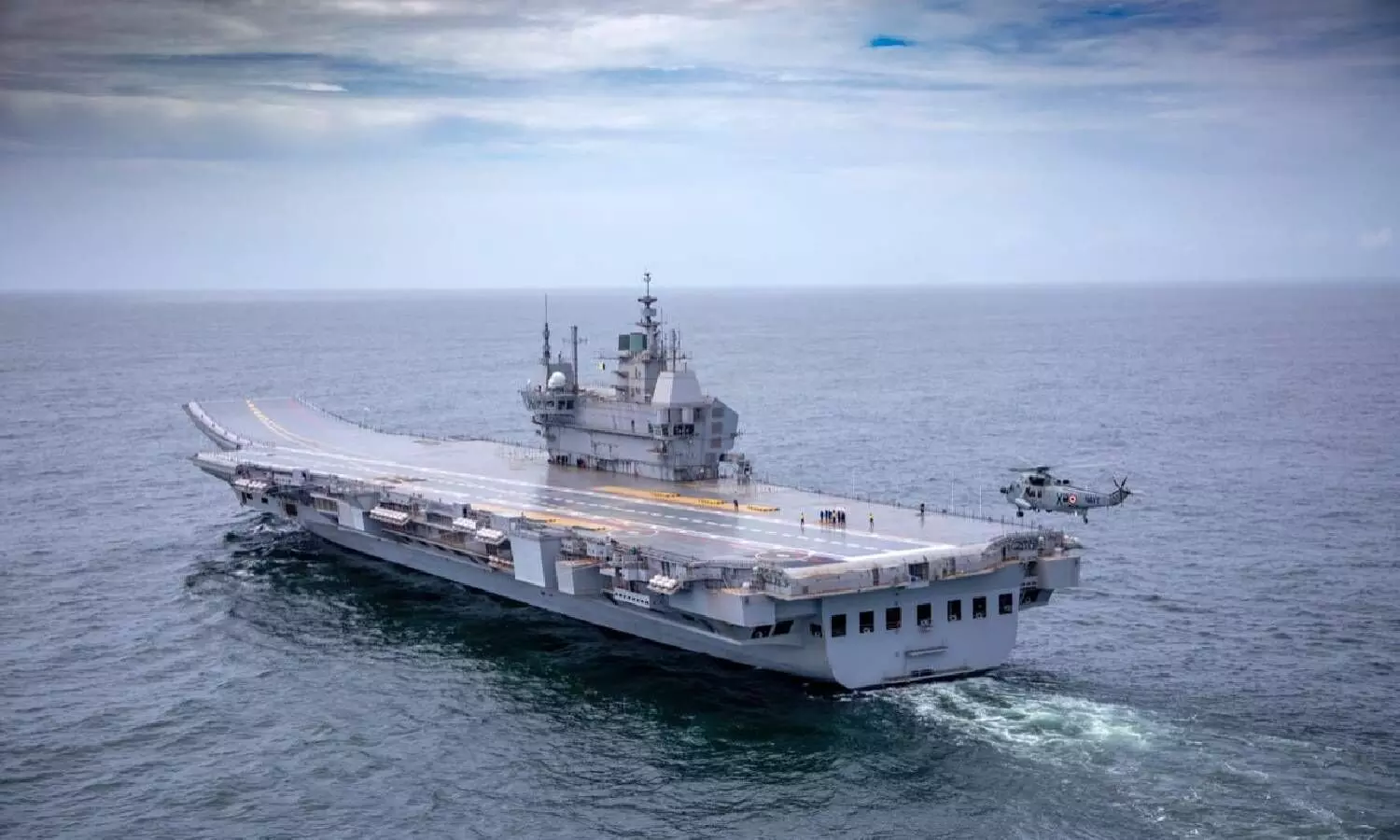Why Vikrant matters
Decommissioned in 1997, she will always be remembered for her stellar role in 1971. What Vikrant and the forces with her had achieved was Sea Control, a classical concept in maritime warfare. With carriers and their air power being critical to Sea Control even in future wars, her recent resurrection is great news.
By Newsmeter Network
A Stellar Past
The largest ever mass surrender of troops in history since World War 2 happened when 93,000 Pakistani troops surrendered to the Indian Armed Forces in erstwhile East Pakistan (now Bangladesh) at the end of the 1971 war. However, the fact that this happened because the old Vikrant and her aircraft had blocked off the only escape route the Pakistani troops had, through the Bay of Bengal, is less known. Aircraft from Vikrant had also joined the IAF in hammering the Pakistani forces into operational irrelevance from the beginning of the war of 1971.
Decommissioned in 1997, she will always be remembered for her stellar role in 1971. What Vikrant and the forces with her had achieved was Sea Control, a classical concept in maritime warfare. With carriers and their air power being critical to Sea Control even in future wars, her recent resurrection is great news.
A Proud Feat
The commissioning of Vikrant on 2 September by the Prime Minister was a much-publicised event. That this ship has been made in India, and that with this feat India has become only the seventh country in the world to design and construct such a large and complex warship, is something we can be justifiably proud of. But beyond the hoopla over her size and scale, here is how Vikrant matters, operationally.
War at Sea is Three Dimensional
Threats at sea come from the air (aircraft, missiles, drones), from the surface (ships, missiles, gunfire), and from underwater (submarines, torpedoes). With the Indian Navy (IN) facing all these from the Chinese and Pakistani navies, IN has no option but to have adequate anti-air, anti-surface, and anti-submarine capabilities of its own always available at hand, ready for immediate deployment.
Since IN often operates far away from our land in support of India's maritime interests that are almost global in scale, they cannot wait for help to arrive from land when a threat materialises. The only resource that can possibly come from land is air power from the Indian Air Force (IAF). However, several critical shortfalls like the inability to arrive in useful time, myriad responsibilities in various sectors over land etc pose unacceptable limitations. Carriers, which are moving airfields, thus become critical assets at sea. Carriers also facilitate strikes from the air on enemy targets on land and at sea, at large distances. While large ships like destroyers and frigates, too, carry multirole helicopters that can fight enemy ships and submarines, robust airborne capability for sustained offensive and defensive operations come only when a carrier is present with a large number of different aircraft.
A Goal Yet Far
Geography and geopolitics force India to depend upon her oceans for most of her economic activities.
Understanding the importance of maintaining good order in the oceans around us, our post-Independence planners accepted that IN requires four carriers. This was to ensure that at least two or three are operational all the time. The reason is simple—warships are made of steel but they operate in salt-laden oceans. Salt being the worst enemy of steel, warships need elaborate maintenance. One-third of the life of a warship is spent in refits. Two carriers are the barest minimum IN needs so at least one each is available on either coast. But for this, we need at least three in our inventory. With Vikramaditya and now Vikrant being available, a third carrier is a critical goal in operational capability, yet far. Hope we get there soon.
The Author of this report is Commodore G Prakash ( retired)- former Aviator and ASW specialist